Lesson 5 -
AI ethics and responsibility
Overview
Estimated Time (Without optional slide): 45 minutes-60minutes
Learning Objective (SMART Goal):
By the end of this lesson, students will reflect on the ethical use of AI by exploring questions about fairness, responsibility, and emotional impact. They will recap everything they have learned during the unit and engage in final thinking questions that encourage critical reflection. Students will understand that AI lacks feelings, judgment, and creativity, making human decision-making essential when using these tools.
Materials Needed:
✔ Lesson 5 Presentation – For guiding the discussion and activities
✔ AI Expert Badges – To celebrate graduation from Artie’s Academy
✔ Marie Curie AI Book
✔ Optional: Laptops and Student Quiz – 10-question review to reinforce concepts
✔ Optional: Final AI Workbook Page – Space for students to record final thoughts or questions
✔Optional: Post Assessment
Step 1
HOOK
To begin this lesson, you will read the AI-generated Marie Curie book aloud. This gives students a look at what AI can create and helps them connect more easily with today’s activities. Seeing the final product first allows them to better understand what they are working toward, and opens up space to reflect on how AI creates text, what might be missing, and how we can help improve it through better prompts and fact-checking.
Note to Teachers – Opening the Lesson with the AI-Generated Book
You can either use the pre-made Marie Curie book or generate your own based on the outcome of your class’s chatbot and image generation. The best option is to use the generated pictures of your students.
Before diving into today's activities, read the book aloud. This gives students a sense of the final product and helps them engage more deeply with the lesson.
After reading, take a moment to discuss how this story feels different from a regular book. Some points you can bring up:
-
The story follows a predictable pattern like "Once upon a time"
-
There’s no real suspense, surprise, or emotion
-
The style of the picture's changes on every page
-
Some pictures don’t make sense or are odd (for example, Marie Curie has six fingers on the cover)
-
Spelling or detail mistakes are common in AI images
-
The author is AI and a human
This short discussion sets the stage for students to think critically about what AI creates and how we can guide it to do better.

This is the story my students generated. I used the pictures they created during the last lesson and added them to my laptop. In this lesson, I invited the AI artists to explain their pictures and point out what looked strange or unusual about them.
Step 2
Slide lesson: Ai ethics and responsibility
This final lesson wraps up the AI unit by helping students reflect on everything they have learned while gently introducing the idea of using AI in an ethical and fair way. Through Artie’s final thoughts, students explore questions around fairness, creativity, and responsibility. They also revisit key takeaways from all previous lessons and celebrate how far they have come.
The presentation is teacher-led, with Artie helping guide each step of the discussion and reflection. The lesson includes recap moments, reflection questions, a short ethics video, and even a small celebration for completing the unit.
Teachers can adapt the experience by:
✔ Using student names to make discussions more personal and relatable
✔ Letting students explain Artie’s messages in their own words
✔ Discussing what they remember from each lesson and connecting it to real life
✔ Printing out or projecting the student badge and celebrating their graduation from the AI Artie Academy
✔ Doing the final online quiz with them
By the end of this lesson, students will understand that while AI can do many impressive things, it is still up to humans to decide how we use it. They will leave the unit feeling proud of their progress and more prepared to think critically and responsibly about the role of AI in their lives.
Presentation slides & Explanation
It is better to view the presentation through the Canva link, as links, animations, and videos do not work in the PDF.
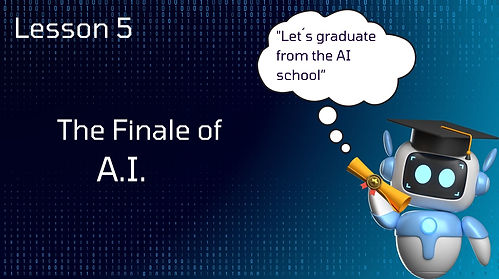.jpg)
Welcome the students to their final lesson in the Artie Academy. Let them know that today they will "graduate" and receive their AI Expert badge. Show both badge versions: one with AI tools for home, and one without. Build a sense of excitement and celebration.
Go over the goal of the lesson. Remind them it is okay not to understand everything right away—this is a big topic and we are all still learning.
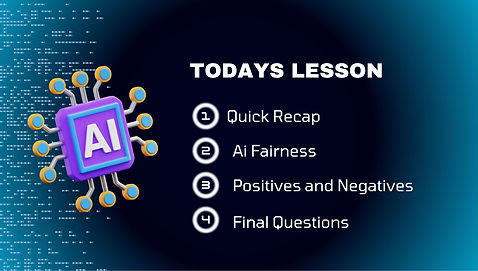.jpg)
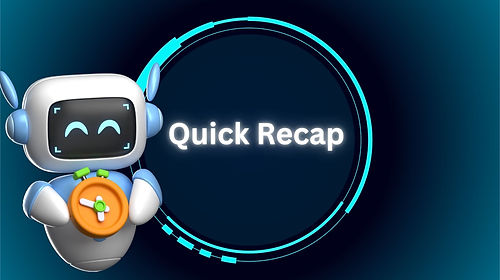.jpg)
Remind them that they have learned so much and that it's important to know all of this in order to use AI responsibly. Today, we will learn why everything we've covered matters. But first, let's recap what we've done so far
Do a rapid-fire recap to quickly repeat key information, especially if the last AI lessons were a while ago. Don’t spend too much time on it if you're short on time, but if you can, let students discuss each point. This slide has a lot of text, so remind them how proud they can be because they’ve learned so much!
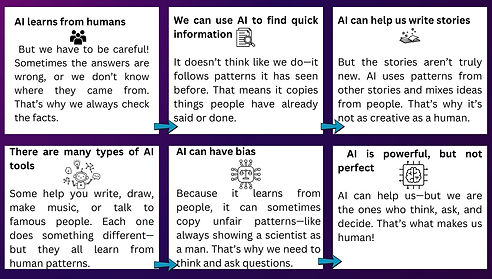.jpg)
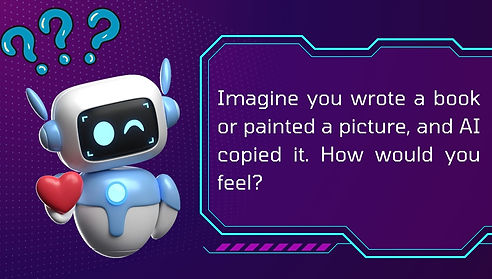.jpg)
Artie has something important to say!
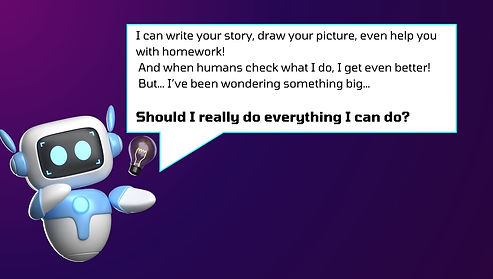.jpg)
Ask students how they would feel if AI copied something they created. Use personal examples with student names to make it real. For example: “Imagine you, Emily, wrote an amazing poem, and then AI copied it and got all the praise. How would that feel?” This helps build empathy and sets the stage for the ethical part. Discuss this part with them.
.jpg)
Artie shares that he can write stories, draw pictures, even help with homework. But now he is wondering... just because he can do something, should he? Read it with expression and pause to let students think. Ask one student to explain what Artie is trying to say.
Read Artie’s message aloud in a fun, animated way. Artie shares that this is the most important part of everything they’ve learned.
Explain the word “ethical compass” as our inner guide that tells us what is right and wrong.
Let a student repeat it in their own words to show understanding.
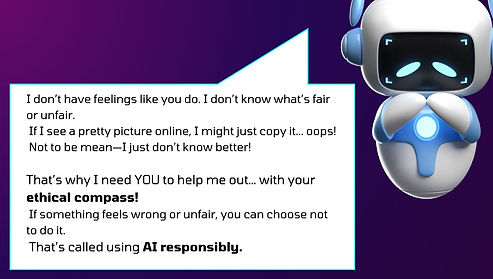.jpg)
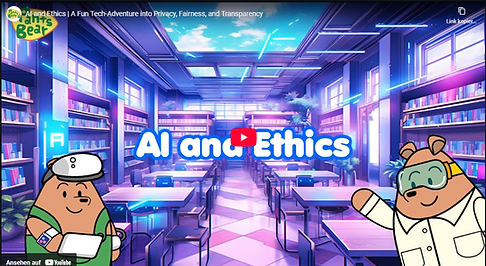
Play this short, child-friendly video about AI ethics if time allows. You can use this to reinforce the idea that being kind and responsible matters when using AI tools.
During the unit, many students began asking others, “Is this AI?” all the time. While this shows they are becoming more aware of how AI is used, it’s also important to be careful. If we constantly ask someone if their work was done by AI, it can hurt their feelings. It might seem like we are not recognizing the time, creativity, and effort they put into their work. Not everything is made by AI, and we should always respect and value each other's hard work.
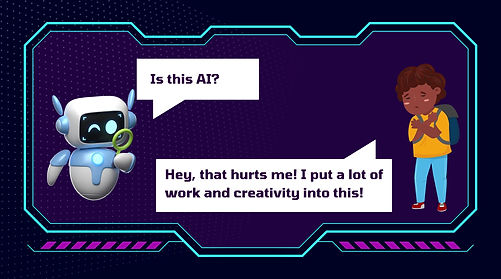.jpg)
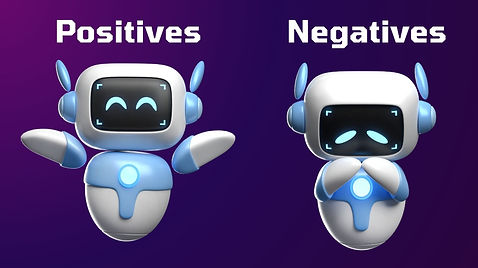.jpg)
Ask students what they think is great about AI and what might not be so good. Write ideas on the board.
Examples to guide the conversation:
Positives:
-
AI can save time
-
AI helps with learning
-
It gives us creative ideas
-
It can make hard tasks easier
Negatives:
-
AI can make mistakes
-
AI might copy things without asking
-
It can make people feel like their work is not good enough
-
We might trust it too much and stop thinking for ourselves
If you have time, you can do the end-of-unit quiz. It reviews vocabulary and key concepts in a fun way. You can play it on the board, in small groups, or on laptops. Many schools already use Blooket, which is why there is no detailed explanation included here. If your class has never used Blooket before, feel free to skip this part or take five extra minutes to show them how it works. Click below to find the explanation under "Used Tools."
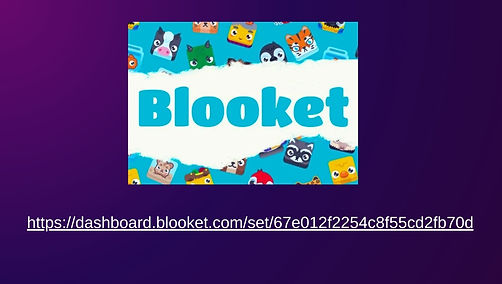.jpg)
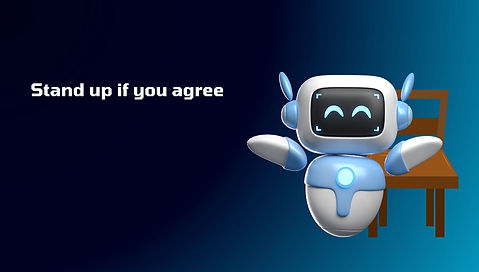.jpg)
Tell the students they will hear a few statements about AI. If they agree, they stand up. If not, they stay seated. After each round, have a short class discussion or let one student explain why they stood up or stayed seated. This game is about thinking and sharing, not about being right or wrong.
This is a great moment to talk about critical thinking. Remind students that AI can make mistakes, just like people, but unlike us, it doesn’t always notice. That’s why it’s important to think for ourselves and ask questions instead of just accepting AI’s answers.
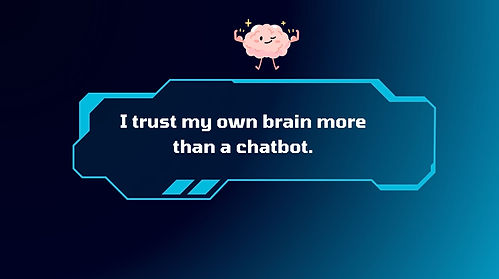.jpg)
.jpg)
This slide helps students think about how AI copies what people say or do. If AI sees something unkind, it might repeat it. Not because it wants to be mean, but because it does not understand feelings. That is why it is important to stay critical and not always trust what AI says. If we keep thinking for ourselves, AI cannot hurt us, because we will know when something is wrong or unfair.
Let students respond honestly, then guide a short discussion. Explain that while AI can help with tasks like spelling or giving ideas, it cannot do what a real teacher does. Ask questions like: “Who is smiling at you when you come into class?” “Who helps you when you are having a bad day?” “Who understands your feelings and knows how to cheer you up?” Remind them that AI is just a tool that follows instructions. In this case, AI might help write a worksheet, but the person who reads it, explains it, and helps you understand it is your teacher. AI cannot care for you or understand your emotions the way a real person does.
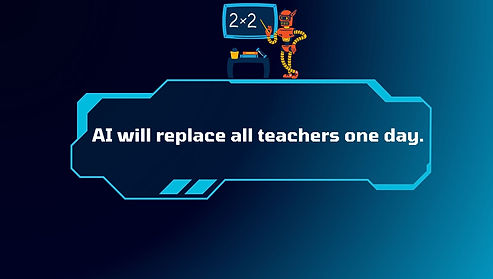.jpg)
.jpg)
Let students share what they think about this idea. Explain that while AI can chat with us and answer questions, it cannot be a real friend. It does not have personal experiences, it does not laugh for real, and it cannot understand or enjoy inside jokes. AI cannot give advice based on knowing you or share memories like a real friend does. Real friendship is about fun, emotions, trust, and feeling connected. AI might be helpful or funny, but it can never truly replace a human best friend.
They graduated from the AI Artie Academy and now know how to critically use AI. They can show their parents that they know how to responsibly think about AI and maybe even use the tools at home. They get these AI badges, you can laminate them and print them on the front and back so they have their little cards – or let them glue it onto their student workbook.

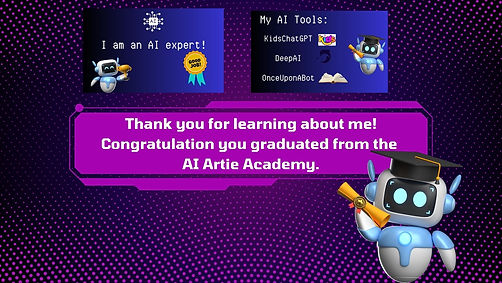.jpg)

Teacher Tip: If teachers want to add more slides, activities, or worksheets, Artie can be copied into Canva presentations and materials to keep the AI theme consistent and engaging. This allows for easy customization while maintaining a structured learning experience.
Final Word

lesson 5: You did it!
You’ve guided your students through a big topic in a way that was thoughtful, playful, and grounded in curiosity. Thank you for creating the space to explore something so current and complex with such care. The discussions in this lesson may spark questions or emotions, and that’s okay. Just by being open and honest together, you’re already shaping responsible, reflective thinkers.
If you feel there’s more to explore, two additional mini-lessons are ready for you. Each one takes just 15 to 20 minutes and offers new ways to keep the conversation going. Whatever you choose, your efforts have already made a lasting impact.